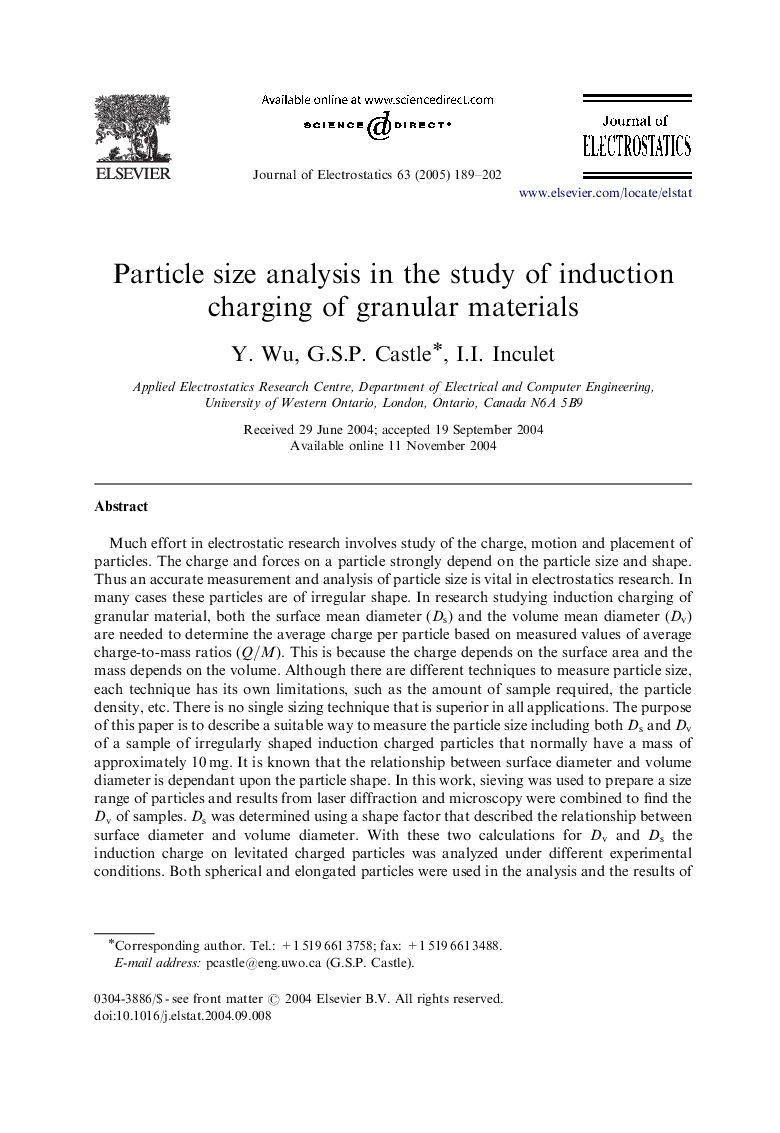| Article ID | Journal | Published Year | Pages | File Type |
|---|---|---|---|---|
| 9698842 | Journal of Electrostatics | 2005 | 14 Pages |
Abstract
Much effort in electrostatic research involves study of the charge, motion and placement of particles. The charge and forces on a particle strongly depend on the particle size and shape. Thus an accurate measurement and analysis of particle size is vital in electrostatics research. In many cases these particles are of irregular shape. In research studying induction charging of granular material, both the surface mean diameter (Ds) and the volume mean diameter (Dv) are needed to determine the average charge per particle based on measured values of average charge-to-mass ratios (Q/M). This is because the charge depends on the surface area and the mass depends on the volume. Although there are different techniques to measure particle size, each technique has its own limitations, such as the amount of sample required, the particle density, etc. There is no single sizing technique that is superior in all applications. The purpose of this paper is to describe a suitable way to measure the particle size including both Ds and Dv of a sample of irregularly shaped induction charged particles that normally have a mass of approximately 10Â mg. It is known that the relationship between surface diameter and volume diameter is dependant upon the particle shape. In this work, sieving was used to prepare a size range of particles and results from laser diffraction and microscopy were combined to find the Dv of samples. Ds was determined using a shape factor that described the relationship between surface diameter and volume diameter. With these two calculations for Dv and Ds the induction charge on levitated charged particles was analyzed under different experimental conditions. Both spherical and elongated particles were used in the analysis and the results of charge per particle were found to be in good agreement with the theoretical predictions.
Related Topics
Physical Sciences and Engineering
Engineering
Electrical and Electronic Engineering
Authors
Y. Wu, G.S.P. Castle, I.I. Inculet,
